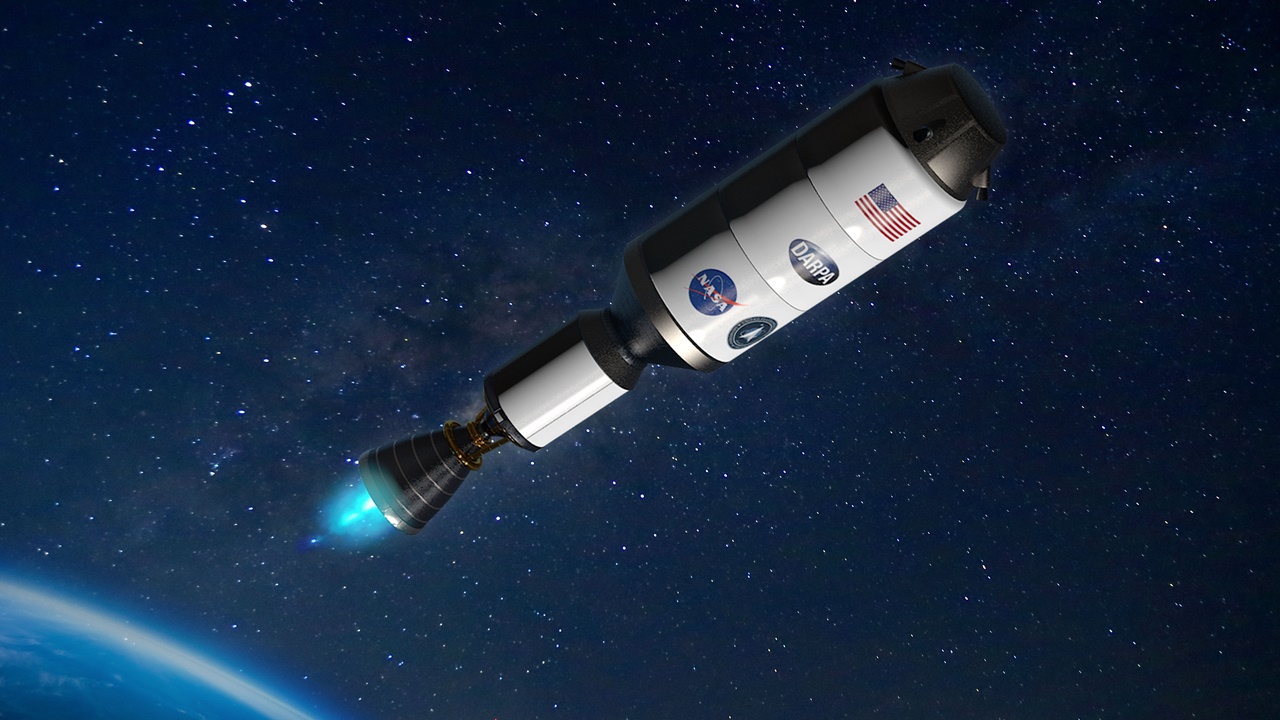- NASA and DARPA have selected Lockheed Martin as the prime contractor to design, build and test a nuclear-powered rocket.
- With this technology the firm expects shorter, faster trips to Mars will be made possible.
- NASA says it hopes to test a nuclear-powered engine as-soon-as 2027.
At present it takes around seven months for a spacecraft to travel from Earth to Mars and NASA wants to change that.
That change comes in the form of the Demonstration Rocket for Agile Cislunar Operations program or DRACO for short. This is to be a nuclear-powered rocket that NASA and the Defense Advanced Research Projects Agency (DARPA) have selected Lockheed Martin as the prime contractor to design, build and test DRACO for the pair’s nuclear-powered rocket demonstration.
Why a nuclear-powered rocket? Well for one it would be faster and allow spacecraft to take a short trip through space. A nuclear-powered rocket may also need less fuel than a traditional rocket leaving more space for scientific equipment.
NASA says that a nuclear-powered rocket is twice as efficient as conventional chemical rockets and could also provide power for instruments and communications systems.
However, the vessel needs to be built and proven to work. As you might imagine, strapping a nuclear fission reactor to a spacecraft is bound to be fraught with complications, chief among which (at least to our mind) is what happens if the rocket experiences a so-called rapid unscheduled disassembly and rains nuclear material down on Earth.
Getting this demonstration right is incredibly important for NASA’s aspirations of sending a crewed mission to Mars.
“Working with DARPA and companies across the commercial space industry will enable us to accelerate the technology development we need to send humans to Mars,” deputy administrator for NASA, Pam Melroy said in a statement. “This demonstration will be a crucial step in meeting our Moon to Mars objectives for crew transportation into deep space.”
The nuclear fission engine is being designed and built out of BWX Technologies while NASA’s Space Technology Mission Directorate (STMD) is responsible for the overall management and execution of the nuclear-powered DRACO engine.
As much as $300 million is being committed toward this project which includes $250 million being set aside for the cost of designing and developing the engine. Once ready, the US Space Force will provide launch and launch site support for DRACO.
“Through NASA’s prior investments – in collaboration with the Department of Energy – we’ve supported the commercial sector to grow their capabilities in nuclear propulsion technology,” acting associate administrator for the Space Technology Mission Directorate at NASA headquarters, Dr Prasun Desai said.
“Now, those investments are coming full circle as we work with these same companies to build the first nuclear-powered rocket to fly in space.”
NASA hopes to be able to test DRACO as soon as 2027.
[Image – NASA]

